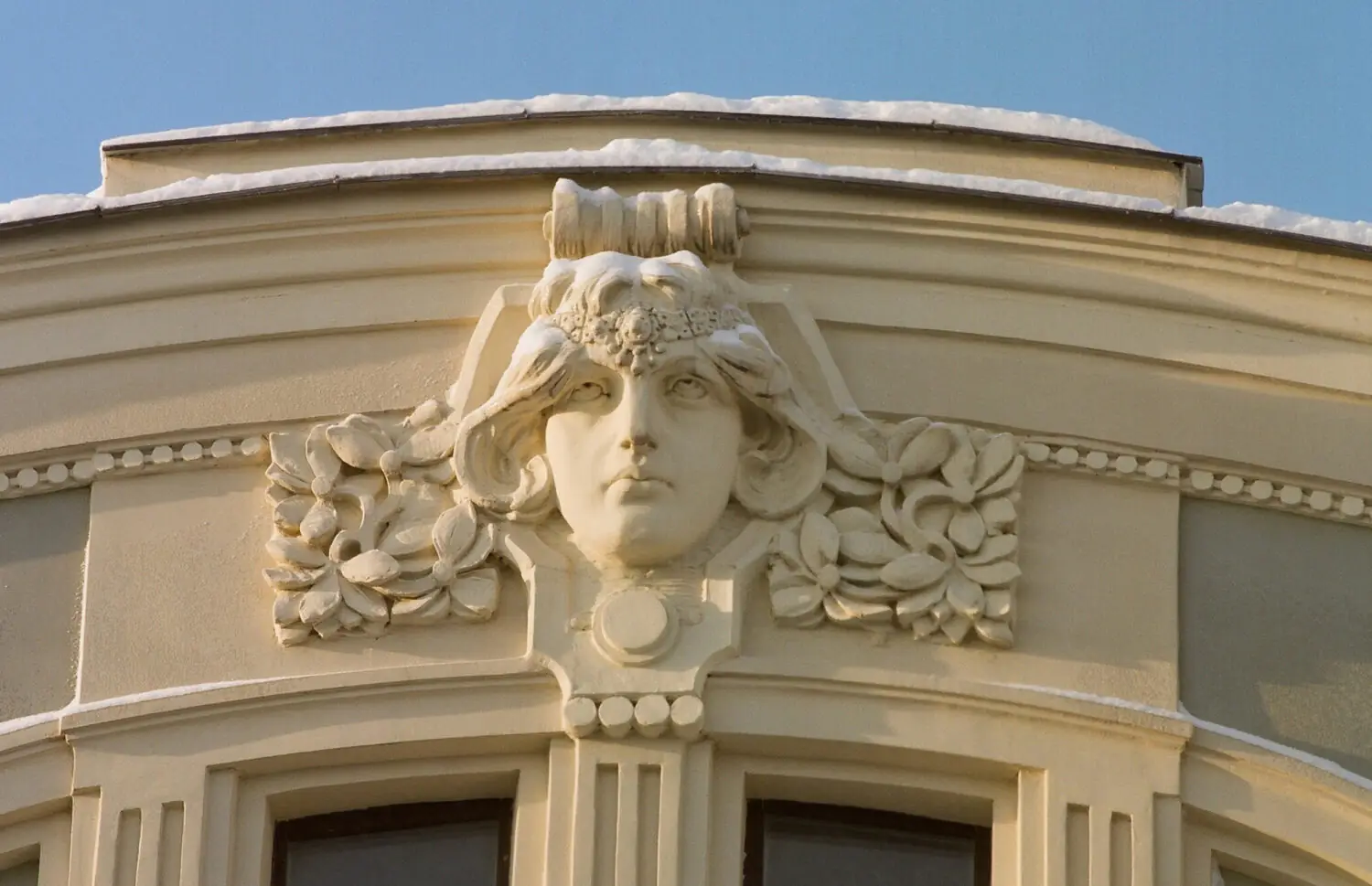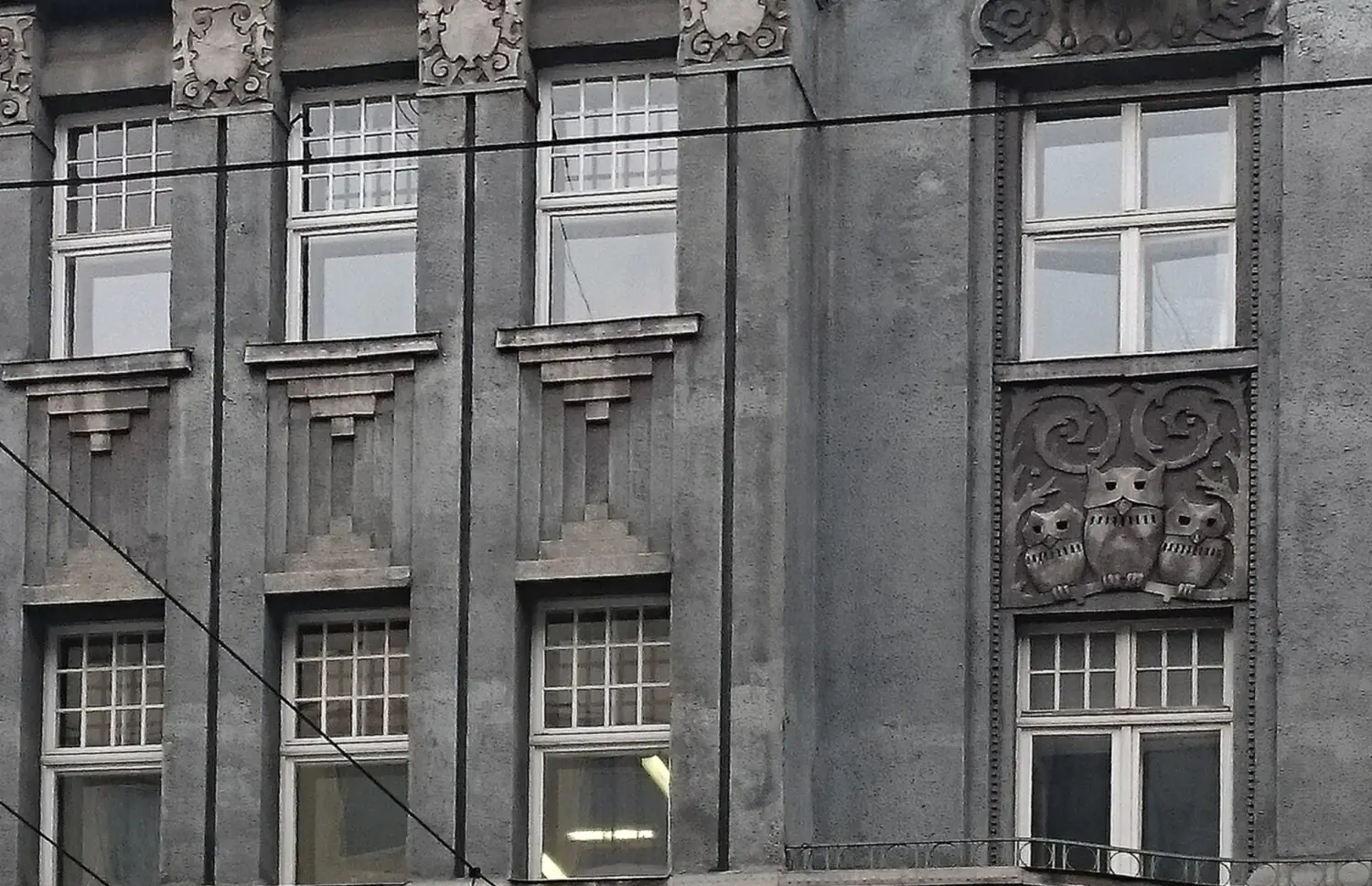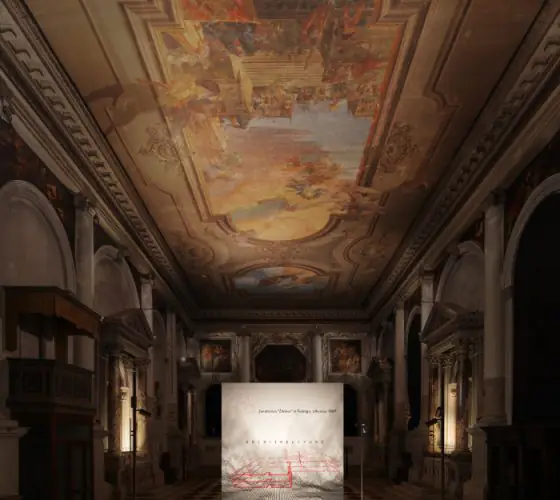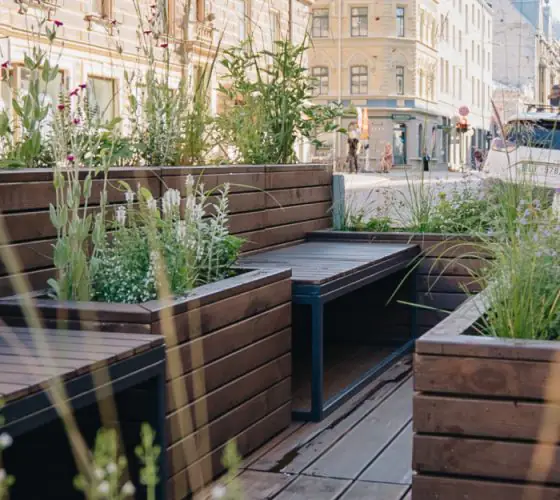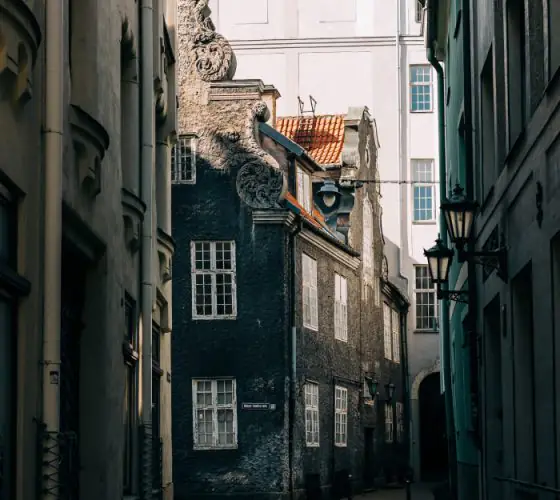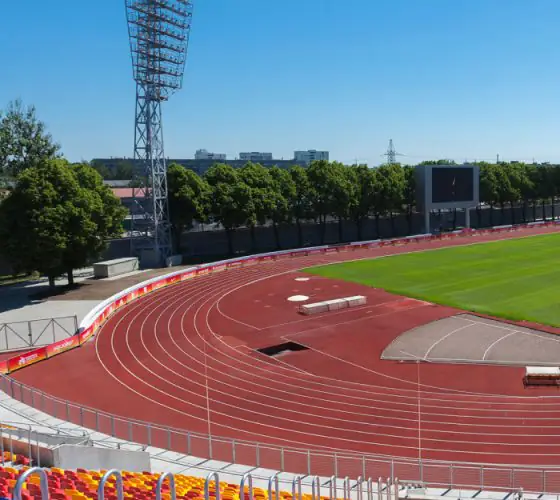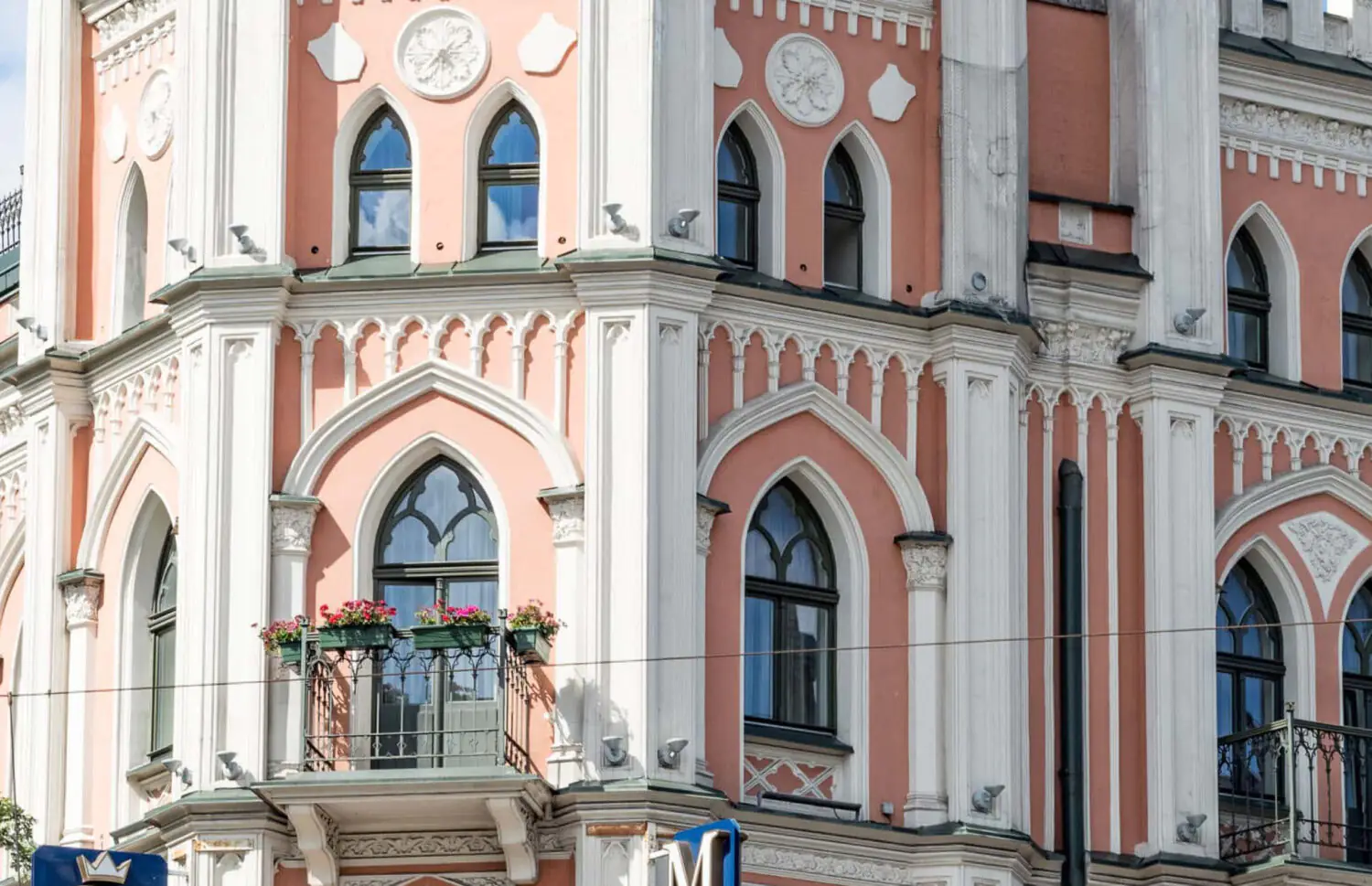
theslowroad.org
Art Nouveau architecture represents the cultural cross-section of Riga’s society at the turn of the 19th and 20th centuries. In the multinational metropolis that Riga was during the early Art Nouveau period the active construction of tenement houses began. Against the backdrop of rapid economic growth, these houses became both a source of income and a new space for everyday life for the rapidly growing bourgeoisie class. The facades of these houses almost always feature the owners’ monograms on cartouches and shields, heraldic elements and symbolic attributes of various professions.
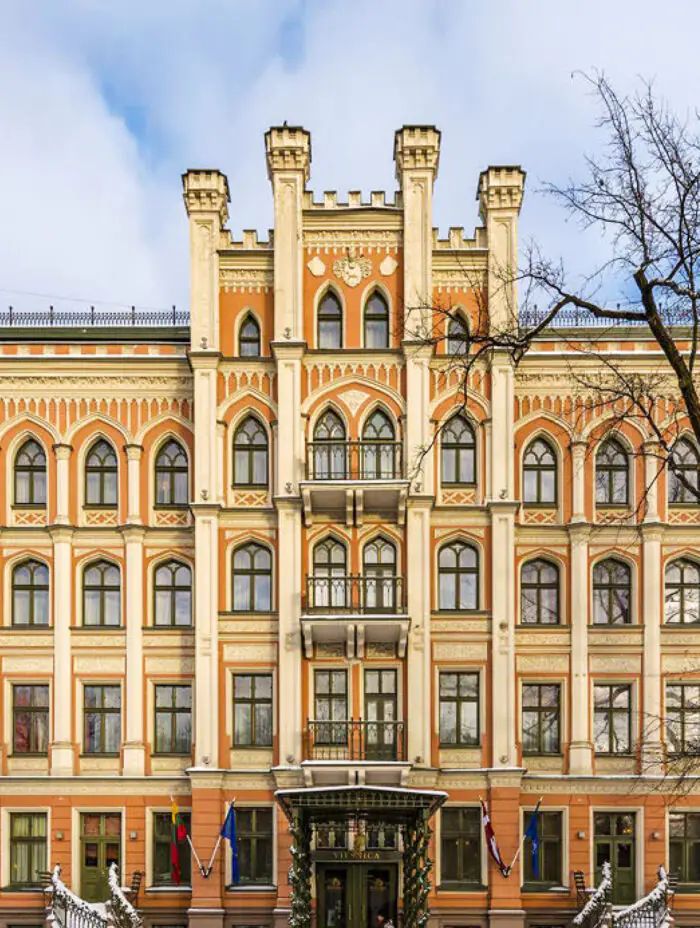
globetrotter.se
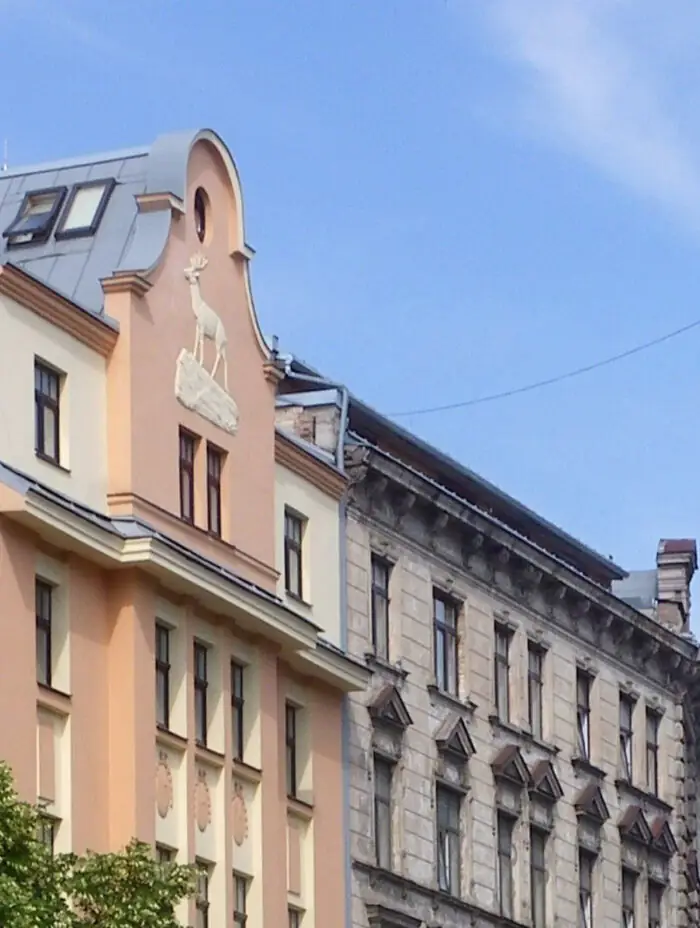
commons.wikimedia.org
Sculptures on facades, a classic phenomenon of European architecture, also appeared in Art Nouveau. They became a tool to reflect the personal ideals of the new homeowners—bourgeois, merchants and officials.
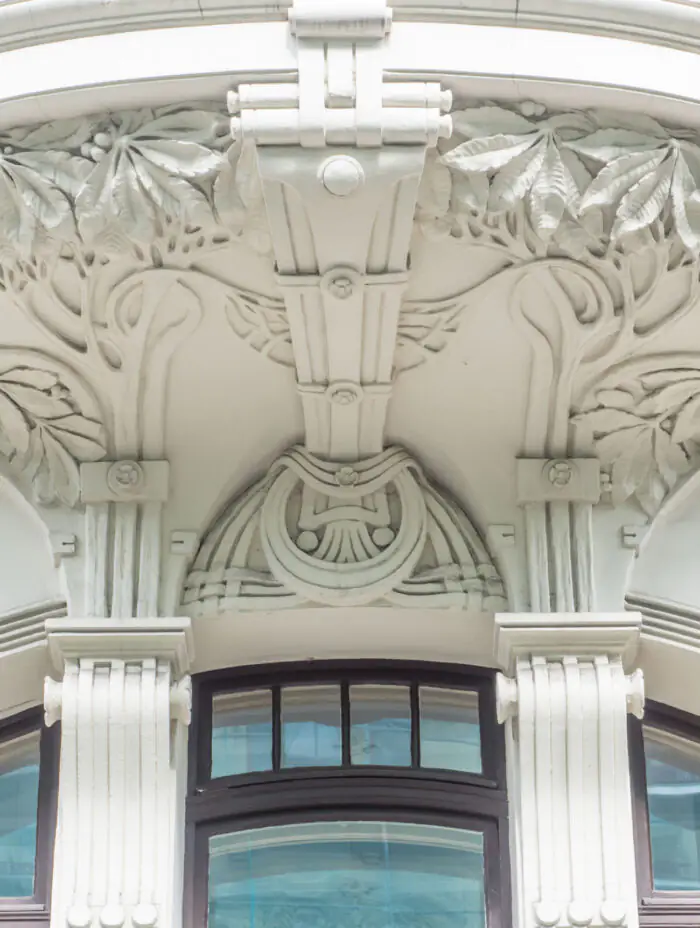
theslowroad.org
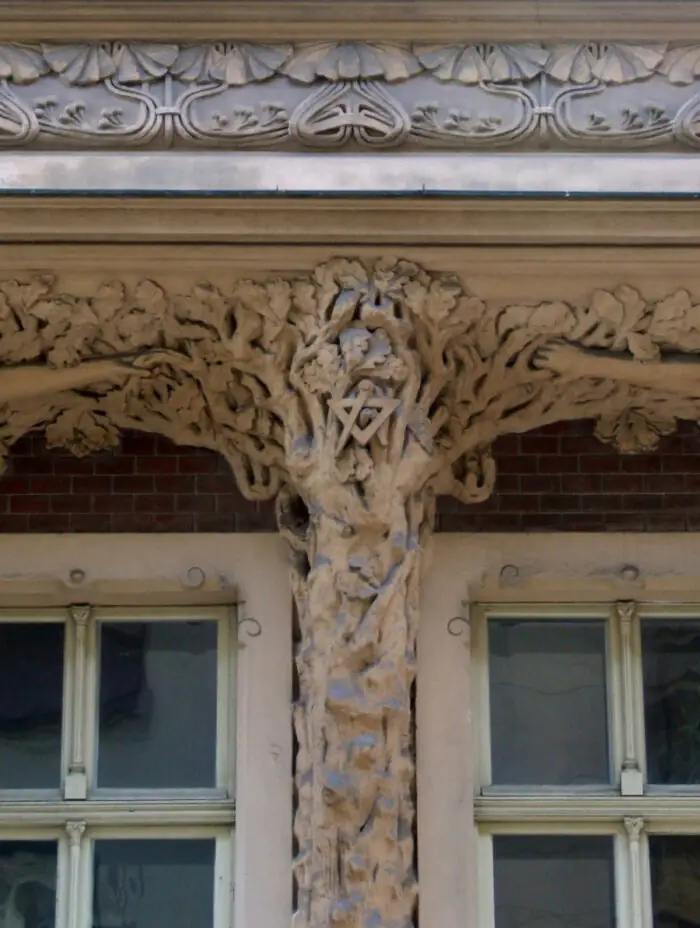
theslowroad.org
Riga has always had strong ties with Germany: during their studies, many young architects and engineers travelled to Dresden, Berlin, Stuttgart, Darmstadt and Karlsruhe. Some owners of decorative sculpture or painting workshops in Riga were emigrants or were educated in German universities. This cultural exchange had a significant influence on Latvian architecture—that is why the facades of some of Riga’s Art Nouveau buildings used motifs of Otto Wagner’s building decoration, or, for example, the mascons and some compositional techniques of the Berlin architect and sculptor Otto Reth (1858–1911).).
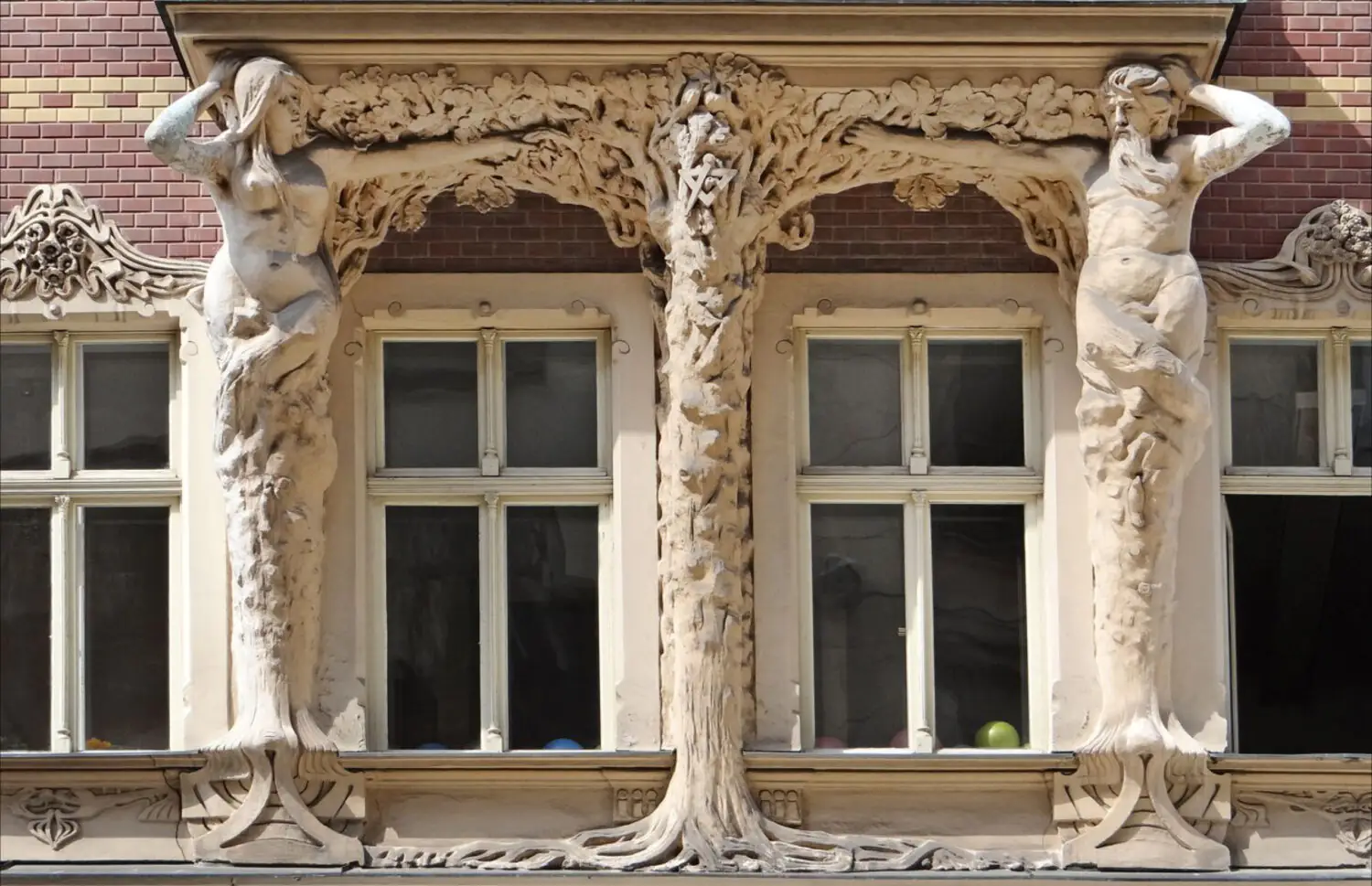
art.nouveau.world
The figure of trees and their parts is often repeated in the decorative sculpture on Riga’s buildings. The motif of horse chestnut (Aesculus Hippocastanum), a symbol of opulent luxury, is one of the most popular in the decoration of buildings. The second most popular tree is oak (Quercus). This is explained by the archetypal nature of the oak tree: in many traditions and beliefs (including Latvian ones) this tree is a symbol of courage, strength, independence and longevity. Other local flora is also reflected in Riga Art Nouveau sculptures: apple trees, pine trees, hawthorn (Crataegus) and cones. In addition to new local elements, traditional motifs such as the palm branch, acanthus, ivy, grapevine have retained a stable place in the decor.
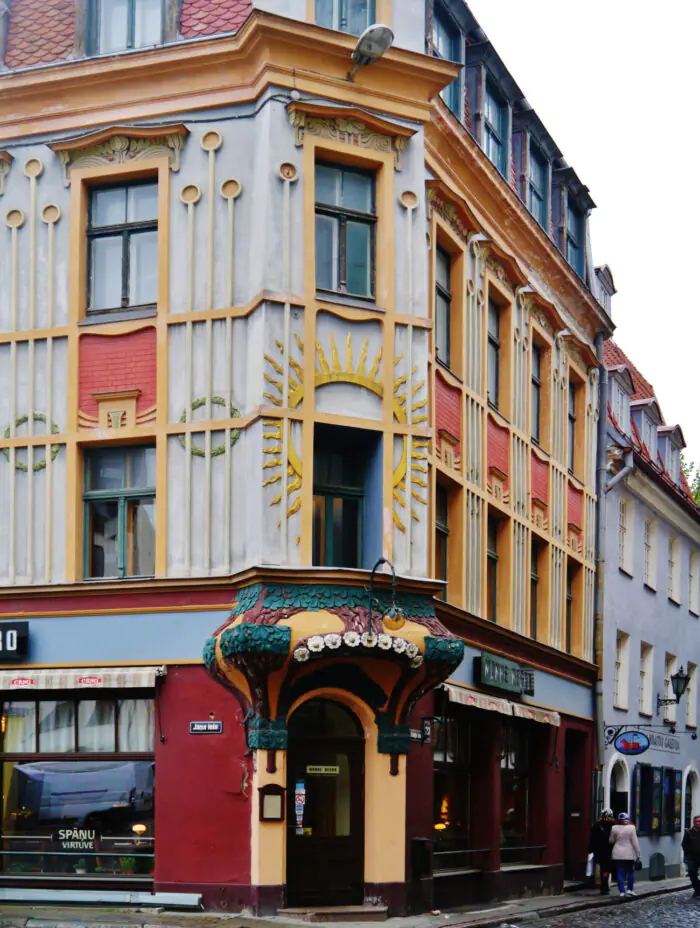
commons.wikimedia.org
The figures of the sun and star became very popular, symbolizing the spirit’s striving for light and high ideals. The eight-pointed (morning) star is a traditional symbol of the victory of light over darkness, while the six-pointed star, the hexagram, also known as the Star of David, was attributed magical protective properties.
An important place in Art Nouveau sculpture is given to animal images, such as the dogs and the lions, as well as to fairy-tale creatures and chimeras such as Medusa Gorgon, dragons and sphinxes. All of them also played a symbolic protective role.
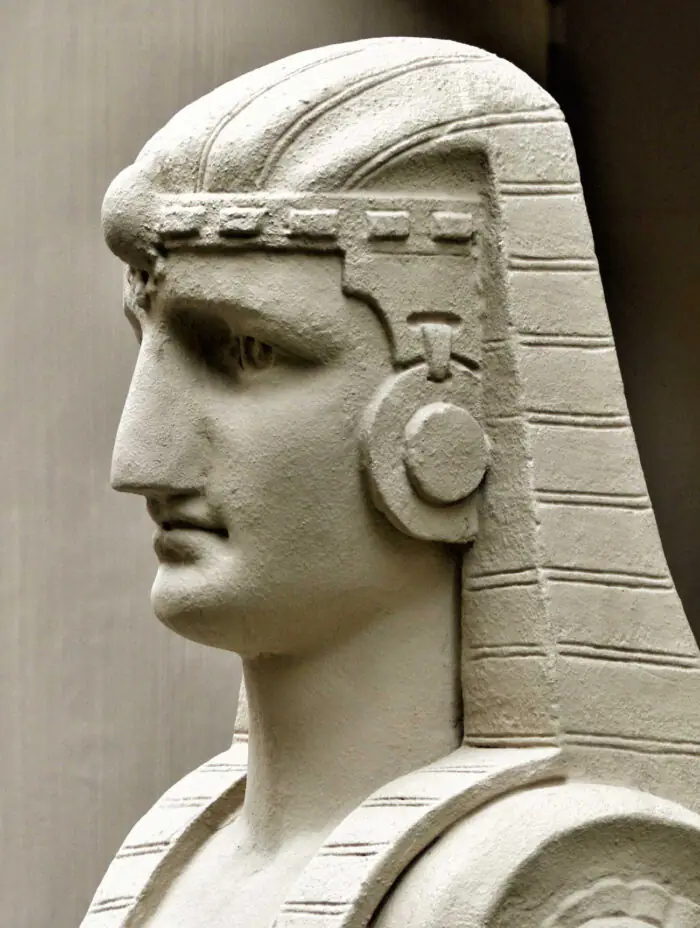
toonsarah-travels.blog
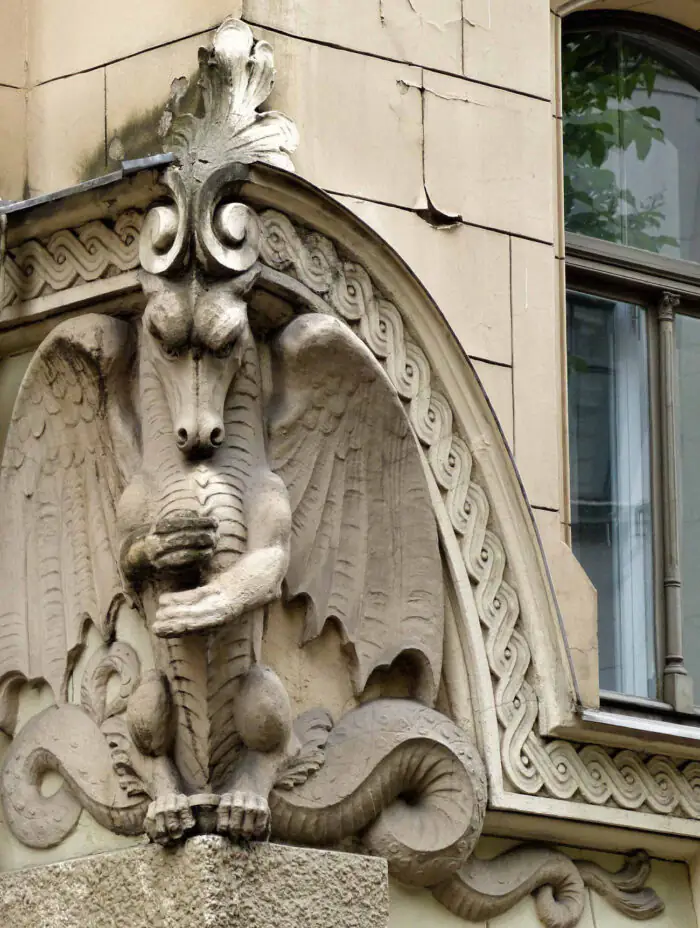
toonsarah-travels.blog
Decorative Early Art Nouveau at the turn of the nineteenth and twentieth centuries centuries is characterised by richly decorated facades: sculptures, female figures, masks, mythical creatures and animals, a variety of stylised geometric forms, ceramic details, ornate window decoration on each floor and rich decoration in the upper part of the facades.
The most striking example of such Art Nouveau with abundant decoration are the buildings on Alberta iela: we wrote about them in another article.
But there is also another version of the Art Nouveau, which appeared a bit later. The dramatic events of the 1905 revolution revealed serious social and national contradictions in the Russian Empire, which then included Latvia. This moment became a kind of boundary in architecture as well. In Art Nouveau after 1905, the idea of social prestige was transformed: rich plastic decoration was used mainly on the facades of buildings in the suburbs, while in the city centre districts there was a turn to a more rational, “northern” version of Art Nouveau with linear rhythms and more restrained decoration.
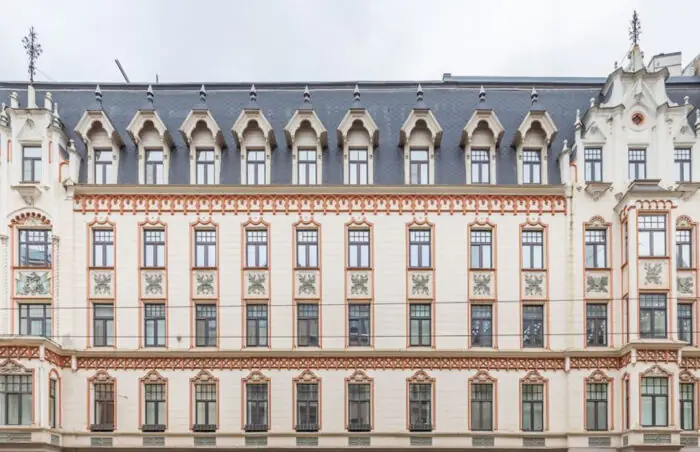
(houses № 5 and 7/9 by architect Konstantin Pēkšēns), built for the Latvian merchant Arved Berg in 1900–1909. The buildings show how the client’s taste changed over the years: from lush decorativeness to laconism
starlex.lv
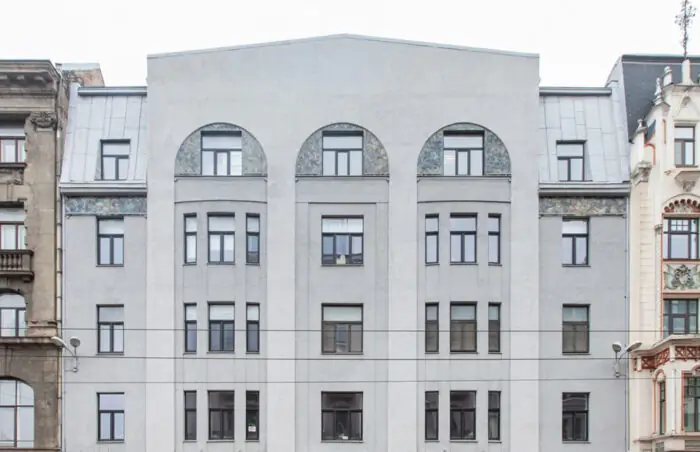
(houses № 5 and 7/9 by architect Konstantin Pēkšēns), built for the Latvian merchant Arved Berg in 1900–1909. The buildings show how the client’s taste changed over the years: from lush decorativeness to laconism
starlex.lv
An important source of artistic influence for Riga’s Art Nouveau after 1905 was Helsinki, where Finnish art culture became a model for local artists and architects, contributing to the spread of the Scandinavian national romantic movement.
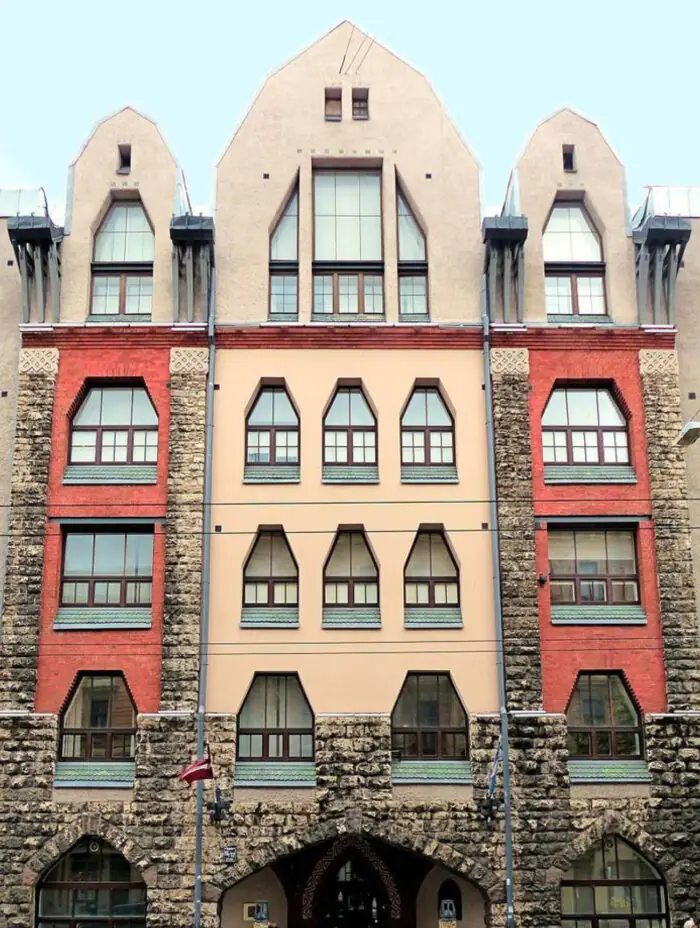
art.nouveau.world
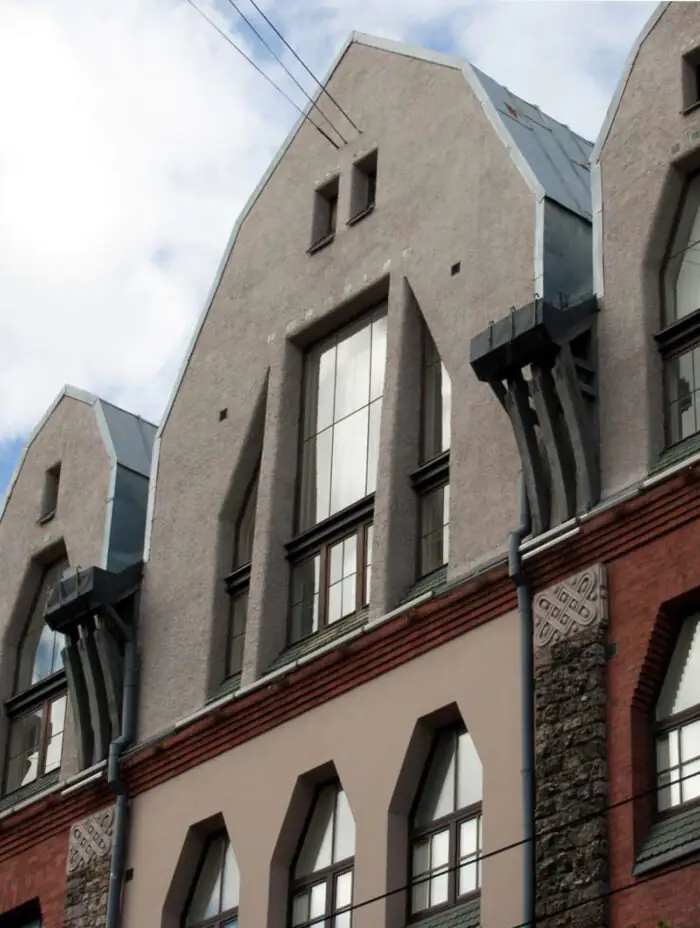
kulturaskanons.lv
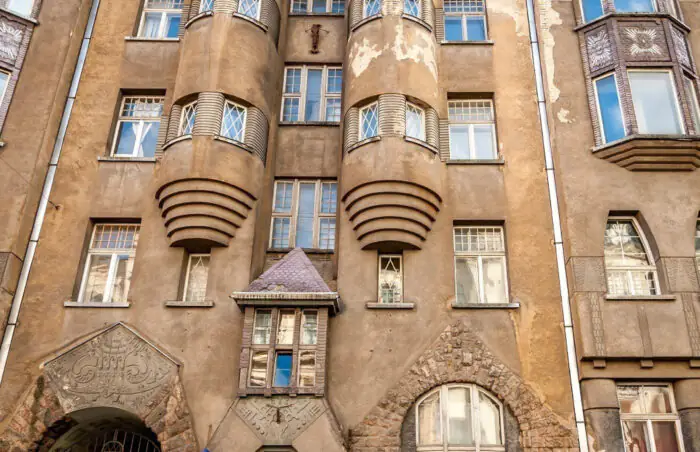
traveladdicts.net
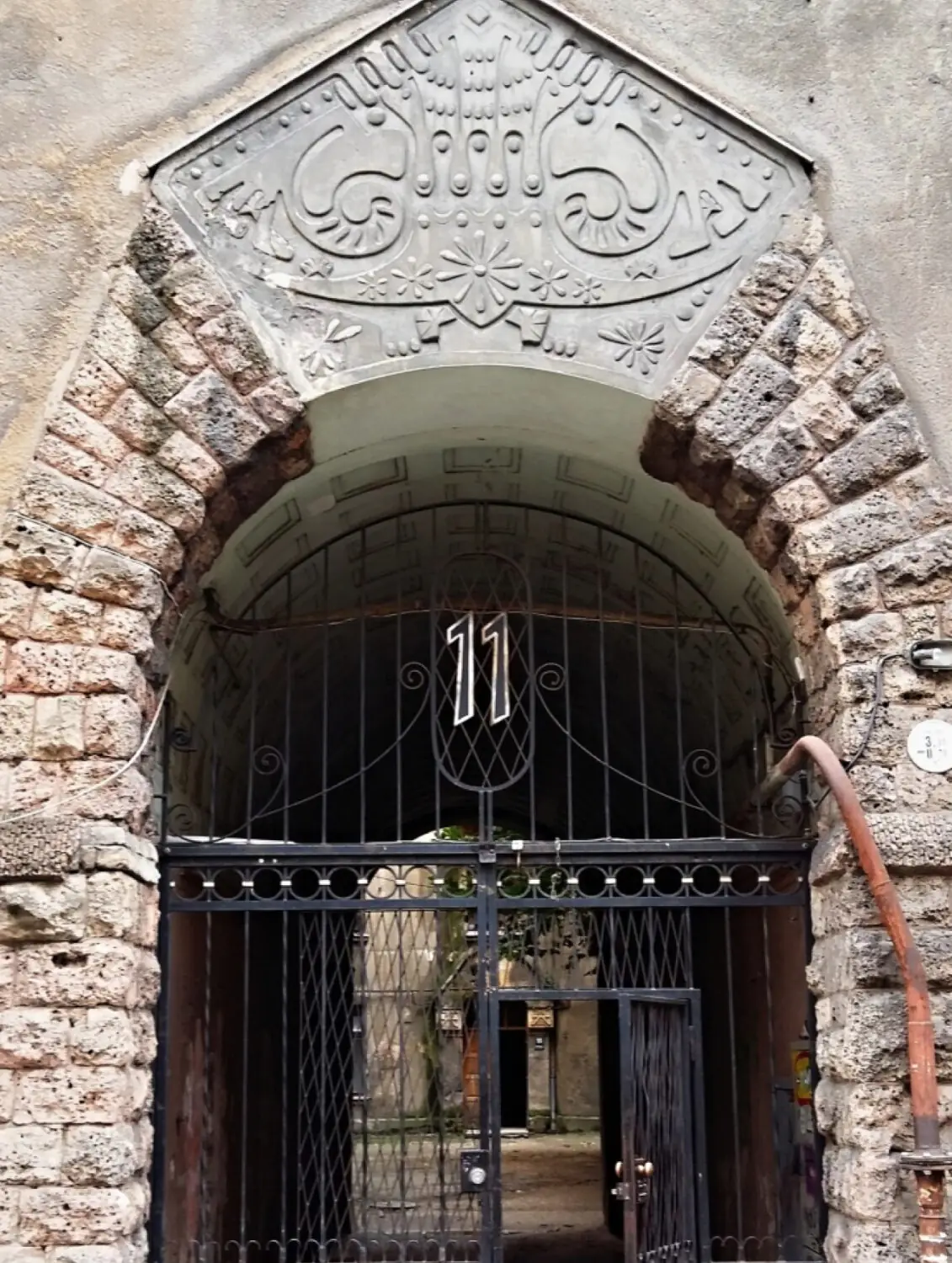
grandeflanerie.com
National romanticism, in other words, an appeal to folklore and traditional crafts, is one of the trends within Art Nouveau. Its characteristic features are the use of local building materials (granite, boulder, dolomite) and chopped forms—for example, bevelled shutters. In terms of sculptural decoration, it is reduced to the plain, low-relief use of national ornaments, which is why recognisable Latvian patterns appeared on facades in Riga.
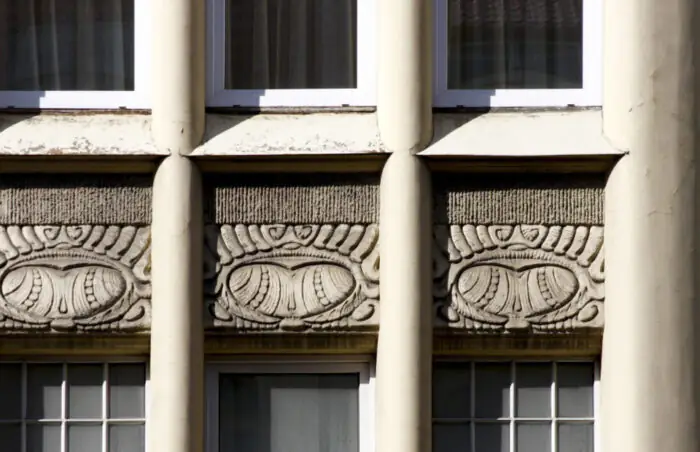
edzet.eu
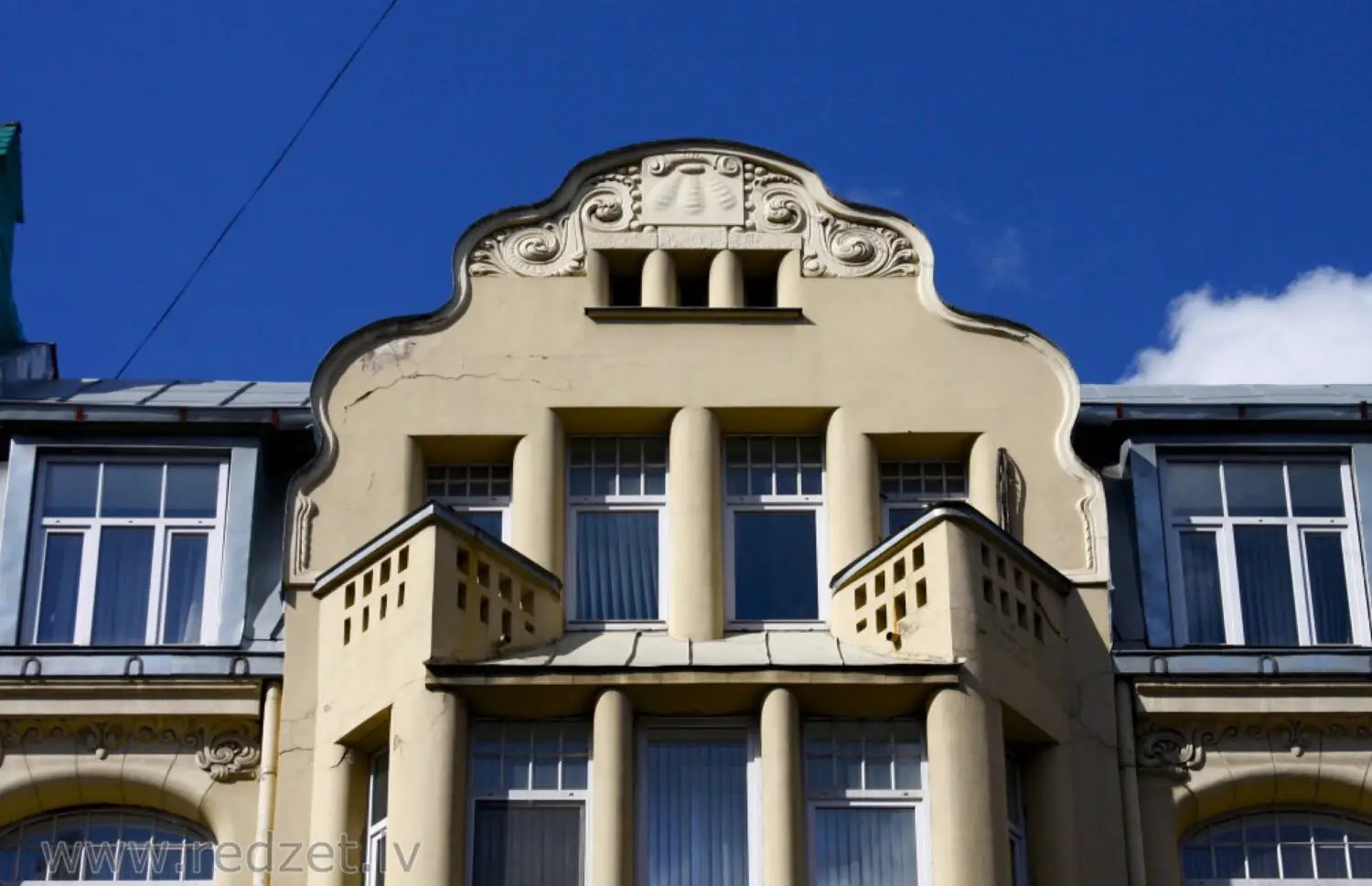
edzet.eu
Under the influence of national romanticism, Latvian Art Nouveau turned to even more rational forms: the late vertical Art Nouveau appeared. Facades became even more laconic, their composition became subordinate to the internal layout of buildings, bay windows and pronounced verticals began to appear. An innovation of these buildings was the large office rooms on the first floors above the shops, which were located on the ground floors. As for the sculptures, the facade decoration again turned to the early Art Nouveau images—plant ornaments and animal images—but in a very restrained version.
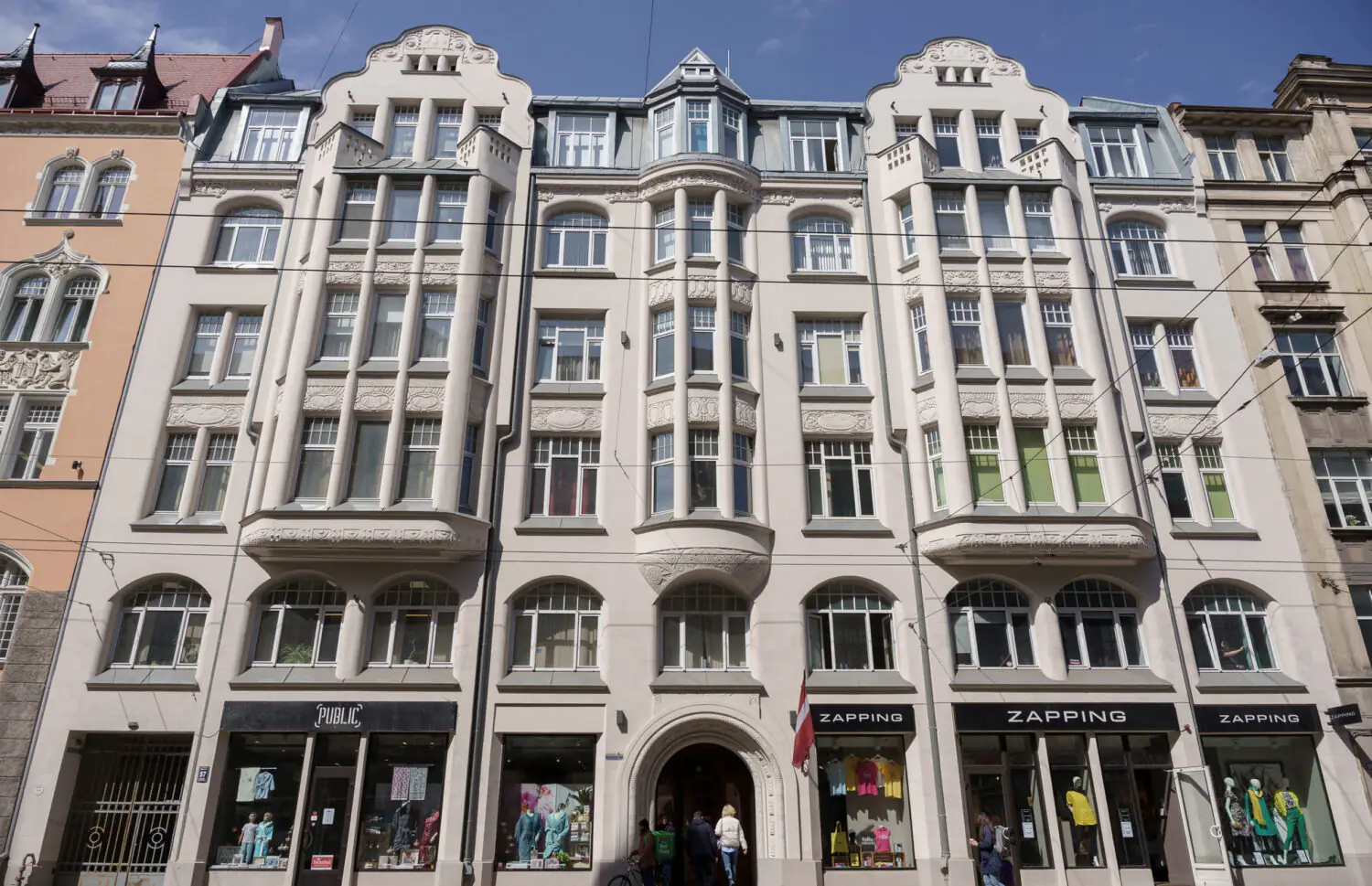
flickr.com
Riga Art Nouveau is a multifaceted and profound movement in Latvian architecture, which appeared at the crossroads of two centuries and absorbed all the contradictions of this transitional period.


